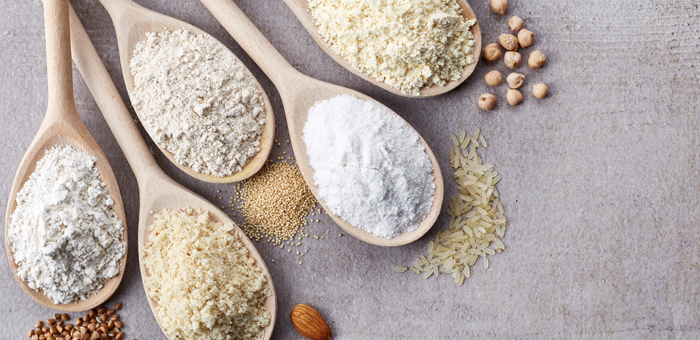Alternative Flours

Avoiding wheat no longer means a life deprived of cake, bread, crackers or biscuits. With the rise in people avoiding or reducing wheat and gluten, there are now many alternative flours that can be used in baked goods. They all have different properties in terms of taste, texture and nutritional value. Here’s a quick look at just a few that are now available:
Hemp Flour
Gluten free, grain free and low carb but highly nutritious, hemp flour is a good source of plant protein and beneficial oils. Hemp flour works best when combined with other flours as it doesn’t rise on its own. A good substitute for those with nut allergies who can’t use almond flour. It has a greenish brown colour that may be best disguised with other ingredients such as cacao powder.
Almond Flour
Gluten free, grain free and relatively low carb, almond flour makes a tasty and nutritious addition to baked goods. It combines well with other flours in sweet and savoury dishes. Avoid if you have a nut allergy or are sensitive to phytates.
Cassava Flour
Made from dried ground cassava root cassava flour is gluten free and grain free but higher in carbs and lower in fat than the nut and seed flours. Its properties are more similar to regular flour than the nut flours. It has a mild flavour that allows other ingredients to sing. Works well combined with almond flour or coconut flour. Tapioca starch is the refined version of cassava flour.
Buckwheat Flour
Gluten free and highly nutritious buckwheat flour is a great, relatively inexpensive ingredient for those avoiding wheat or gluten. It can be used in place of wheat flour in recipes and works well combined with almond flour or coconut flour. Use in pancakes, cakes, muffins, crackers and pasta.
Green Banana Flour
Made from dried banana slices green banana flour is commonly used in Central and South America. Unlike regular banana flour it is not sweet and does not taste of bananas. It is high in resistant starch which passes through the body largely undigested. This makes green banana flour low on the glycaemic index and a good prebiotic. Baked goods made with green banana flour are heavier than those made with regular flour. Works well combined with other flours.
Chickpea Flour
Also known as garbanzo flour, chickpea flour is gluten free, grain free and high in protein and fibre. Good in savoury dishes, breads and pancakes. Can produce a heavy texture. Combine with other flours for a more balanced flavour and lighter texture.
Teff Flour
Teff is a small grain traditionally used to make a sourdough flatbread in Ethiopia called injera. It is gluten free and higher in protein than wheat flour with a slightly nutty taste. With its low GI and high resistant starch content teff is good for blood sugar control. Unlike some gluten free flours teff flour makes baked goods that are light and fluffy.
Polenta
Polenta is also known as yellow corn meal or corn flour. It is gluten free, high in carbs and low in fat. Its yellow colour adds a lovely brightness to the dishes its used in. Works well in gluten free cakes and corn bread. Also good as an alternative pizza base if cooked and left to set before topping with your favourite pizza toppings.
Coconut Flour
Coconut flour is made from dried, ground coconut meat. It is gluten free and higher in protein and lower in digestible carbohydrates than grain flours giving it a low glycaemic index and making it popular among people following paleo or specific carbohydrate diets (SCD). However, those who need to follow a low FODMAPs diet may not do so well on coconut flour due to its inulin content. Coconut flour works well combined with other flours such as buckwheat flour or almond flour in both sweet and savoury dishes. Due to its drying effect it works well to soak the coconut flour in liquid for 15 minutes before beating it into the other ingredients.
Conclusion
There is no shortage of gluten free flours to try. The best way to discover their properties is to experiment. Play around with different combinations in different dishes and see what works for you. Often combining 2 or 3 flours works well. See blog post on Gluten Free Baking for some inspiring recipe ideas.